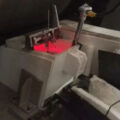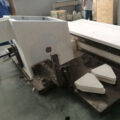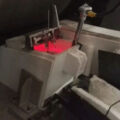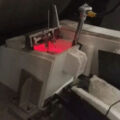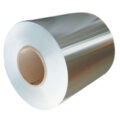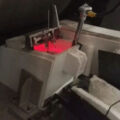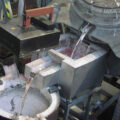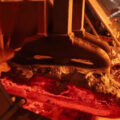With its unique properties, aluminum foil meets various needs of modern production in a wide range of fields. With the development of economy and technology, the requirements for the quality of aluminum foil are increasing. It is hoped that the thickness of aluminum foil will be thinner, fewer pinholes, and higher mechanical properties and surface quality. To produce aluminum foil with a thickness of only 0.005mm, the requirements for the blank are even higher.
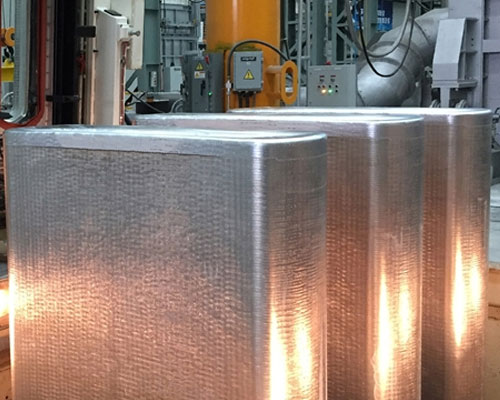
The production of aluminum foil blanks generally adopts two methods: hot rolling and casting-rolling.
The hot rolling method is to refine and purify molten aluminum into large slabs. The ingot size is generally 600mm thick, 2200mm wide, and 4000mm~8000mm long. After milling, the oxides and defects on the surface of the slab are removed. Then it is heated and rolled to a thickness of several millimeters at a temperature higher than the recrystallization temperature. Due to the large volume of the hot-rolled ingot, the internal structure undergoes multiple recovery and recrystallization during the large plastic deformation process, so that the internal structure of the billet is homogenized, the size and shape of the crystal grain, and the concentration of point defects and linear defects change. Remarkable improvement has been achieved in other aspects.
The casting-rolling method is to guide the aluminum liquid through caster tips to the “roll gap” formed between the two rolls. After forced cooling, crystallization, and deformation of the two rolls, a cast-rolled billet with a thickness of 6mm to 8mm is obtained. During the casting and rolling process, the molten aluminum is crystallized by the rapid cooling of the two rolls in the narrow gap between the two rolls, and the solidified billet is simultaneously subjected to a certain degree of rolling deformation of the two rolls, and the resulting cast-rolled plate The internal structure belongs to the semi-cast structure, and the crystal direction is strong. Compared with the hot rolling method, the cast-rolling method has the advantages of less investment, high efficiency, and low cost.

